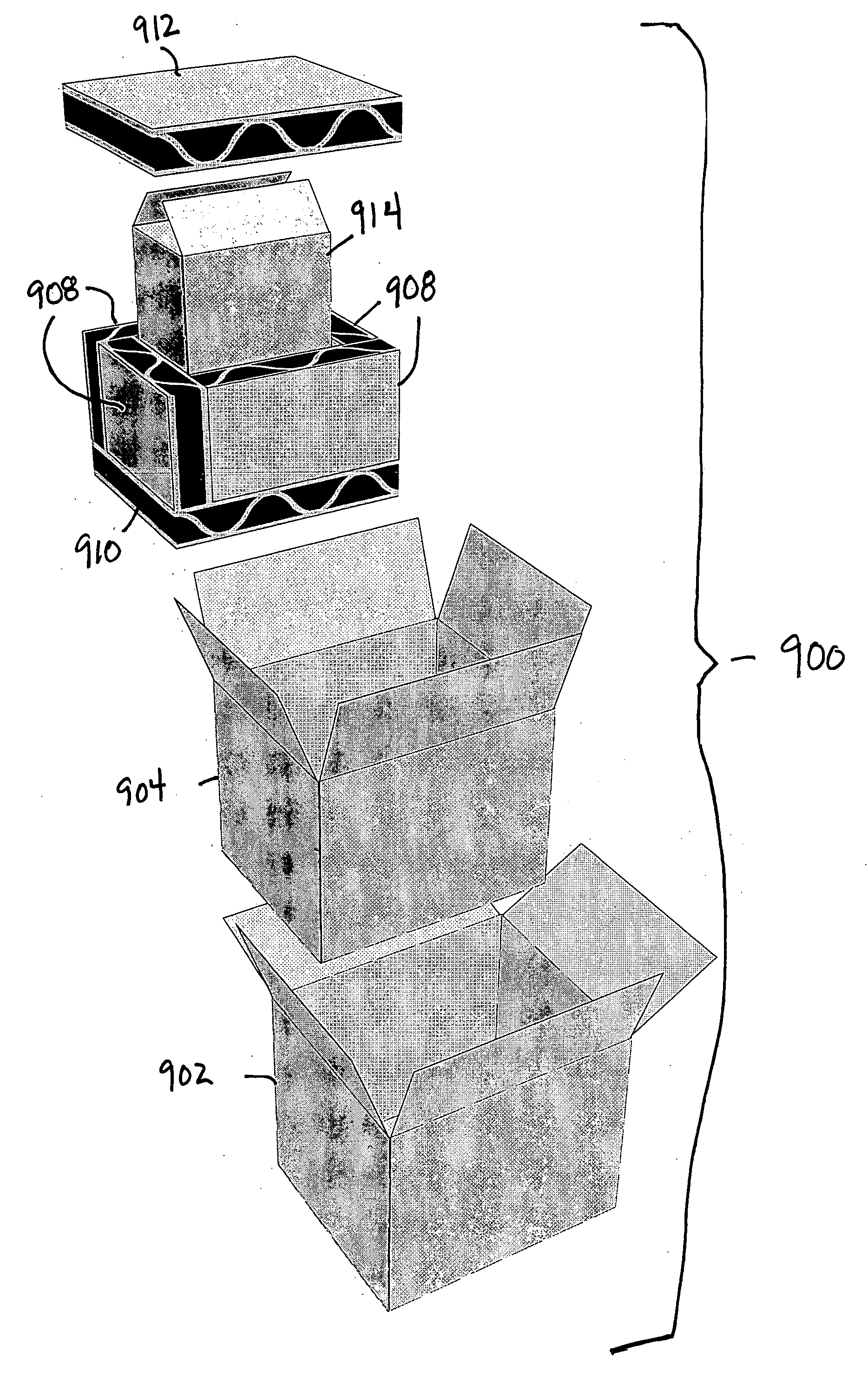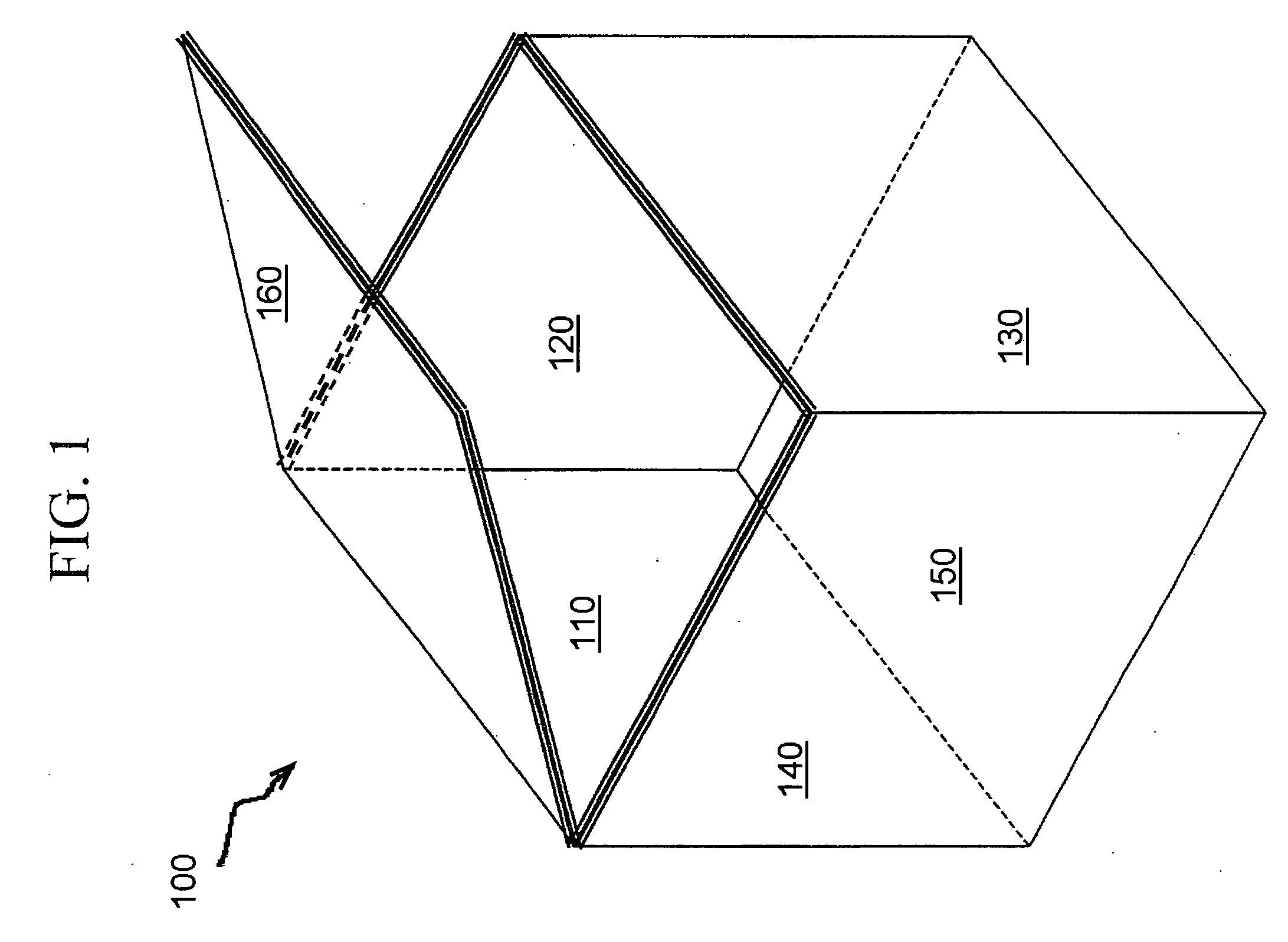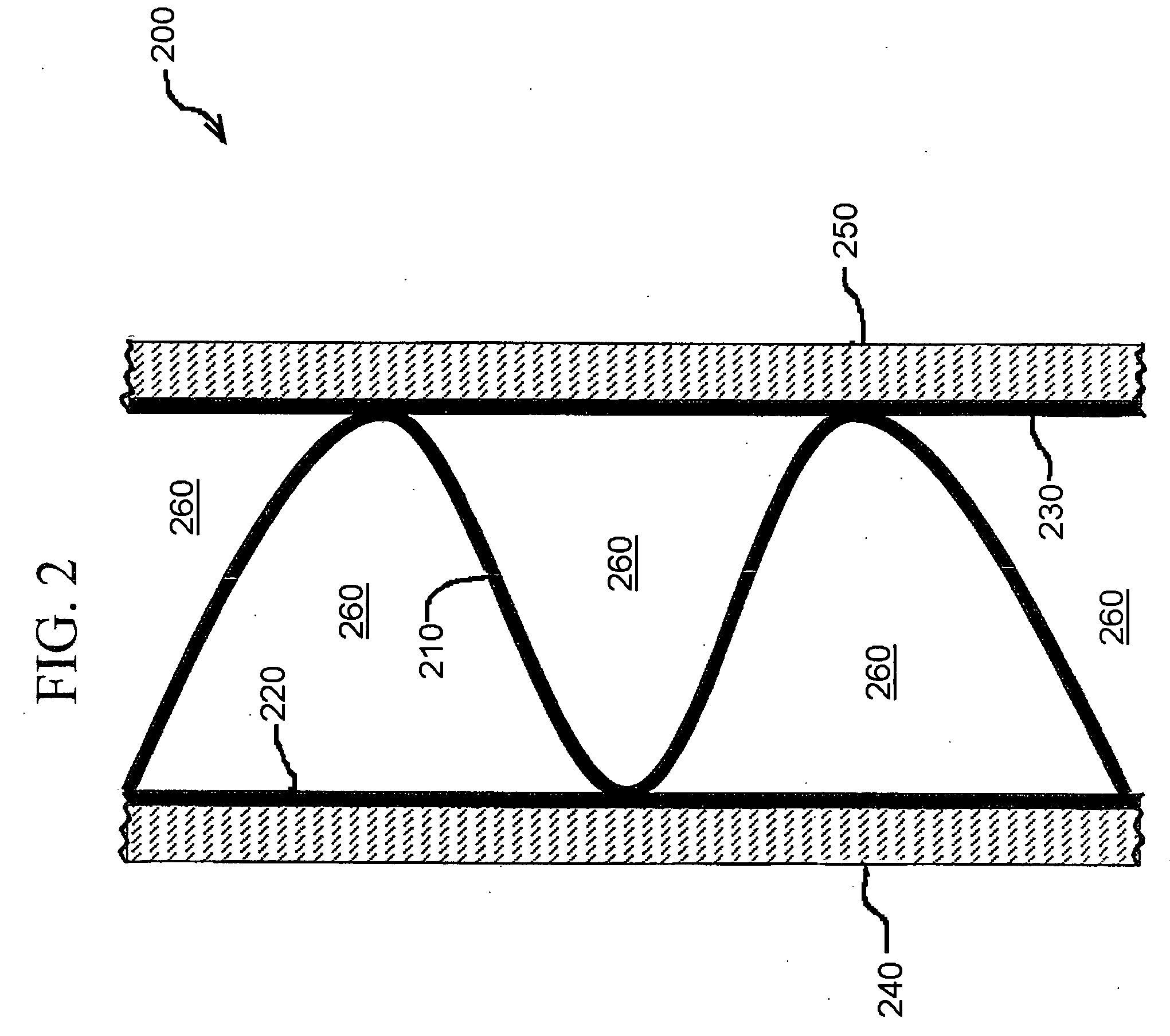Thermally stable containment device and methods
- Summary
- Abstract
- Description
- Claims
- Application Information
AI Technical Summary
Benefits of technology
Problems solved by technology
Method used
Image
Examples
first embodiment
[0025]FIG. 1 is an exemplary illustration of a passive thermal management system 100 for transporting temperature sensitive materials, in accordance with various aspects of the present invention. For example, human blood is typically stored at temperatures between 1° C. and 10° C. Refrigerated pharmaceuticals are typically stored between either 2° C. and 8° C. or 6° C. and 10° C. For temperature sensitive materials such as this, the materials many times simply cannot be subjected to temperature variation or fluctuation, and must be maintained within a very narrow temperature range. The passive thermal management system 100 is essentially a box-like container comprising five corrugated side panels 110-150 and a corrugated lid panel 160. Samples of materials such as, for example, pharmaceutical products to be held within a predetermined temperature range are place within the container 100. Other shapes of the thermal management system are possible as well, in accordance with alternati...
second embodiment
[0046]FIG. 7 is an exemplary illustration of a passive thermal management system 700 for transporting temperature sensitive materials, in accordance with various aspects of the present invention. The passive thermal management system 700 is essentially a box-like container comprising five porous side panels 710-750 and a porous lid panel 760. Samples of materials, such as pharmaceutical products or blood, to be held within a predetermined temperature range are placed within the container 700.
[0047]FIG. 8 is an exemplary illustration of an embodiment of a fibrous-material panel 800 used to form a side of the passive thermal management system 100 of FIG. 7, in accordance with various aspects of the present invention. The fibrous-material panel 800 comprises a layer of absorbing fibrous material 810 between two layers of liquid barrier material 820 and 830.
[0048] In accordance with an embodiment of the present invention, the absorbing fibrous material layer 810 is able to absorb PCM, ...
PUM
 Login to View More
Login to View More Abstract
Description
Claims
Application Information
 Login to View More
Login to View More - R&D
- Intellectual Property
- Life Sciences
- Materials
- Tech Scout
- Unparalleled Data Quality
- Higher Quality Content
- 60% Fewer Hallucinations
Browse by: Latest US Patents, China's latest patents, Technical Efficacy Thesaurus, Application Domain, Technology Topic, Popular Technical Reports.
© 2025 PatSnap. All rights reserved.Legal|Privacy policy|Modern Slavery Act Transparency Statement|Sitemap|About US| Contact US: help@patsnap.com



